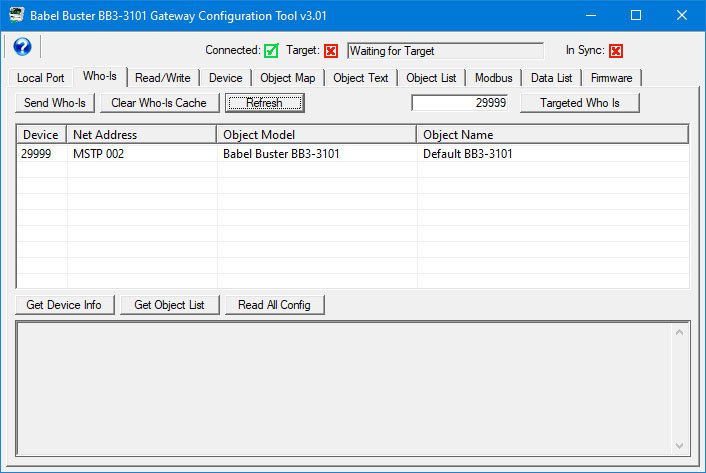

Start by connecting the configuration tool to the network as outlined in section 4 of this user guide. Then come here to the Who-Is page. At first, there will be no devices listed.
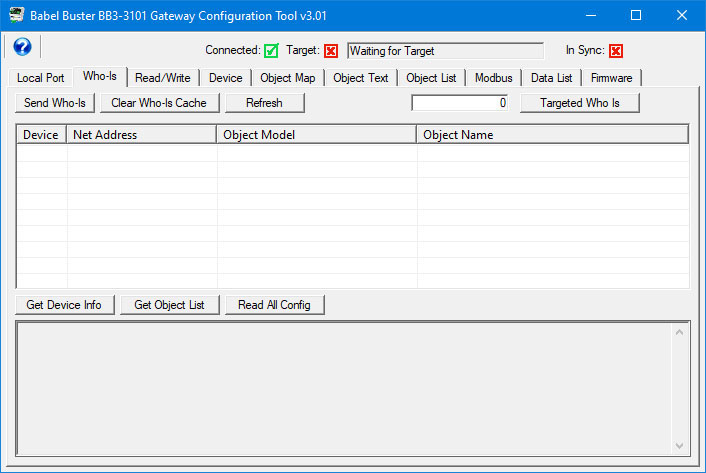
Click the "Send Who-Is" button to discover devices on the MS/TP network.
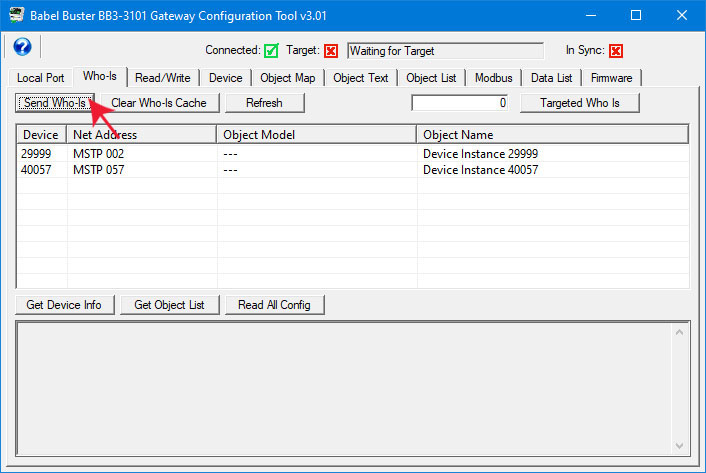
Click the Refresh button to cause the tool to request additional information from each device on the list, namely object model and object name as found in each device's BACnet Device object.
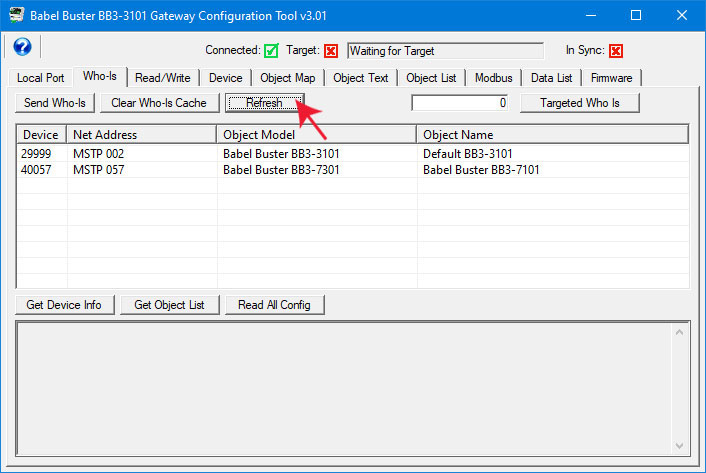
In order to start interacting with a specific device, you need to double click that device on the list. Once selected, the icon to the right of "Target" will turn green, and the device instance and object model will appear in the target window at the top of the screen.

Click the Get Device Info button to get additional information about the selected device, including things like firmware revision. This step is optional and has no bearing on configuring the device. You can also retrieve a listing of all objects found in the device by clicking the Get Object List button. Both of these buttons will work on any BACnet device regardless of whether it is a Babel Buster gateway.

If you want to start over on the device discovery process, click the Clear Who-Is Cache button, followed by Send Who-Is, and then Refresh after devices appear. The only time this step becomes a requirement is if you change the device instance of the gateway you are in the process of configuring. If the device instance is changed, you must redisicover it under its new identity.
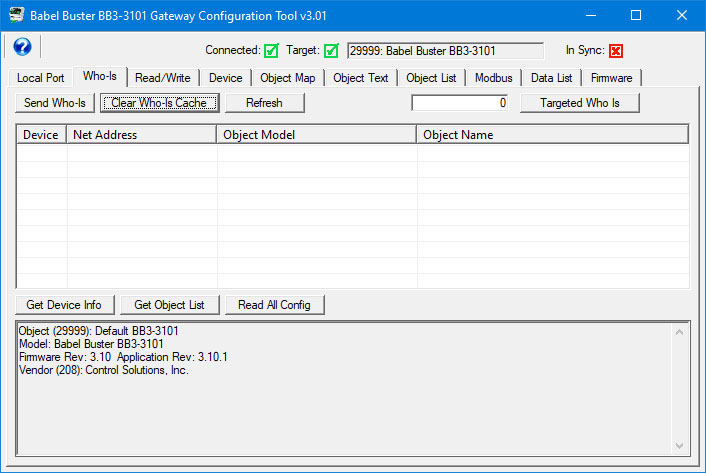
Click the Read All Config button to retrieve all configuration information about the connected gateway. This button only applies to Babel Buster BB3-3101. Using this button on any other type of device will fail because it will not contain gateway configuration properties in its objects. While configuration properties are being retrieved from the gateway, progress will be indicated in the status window at the bottom.
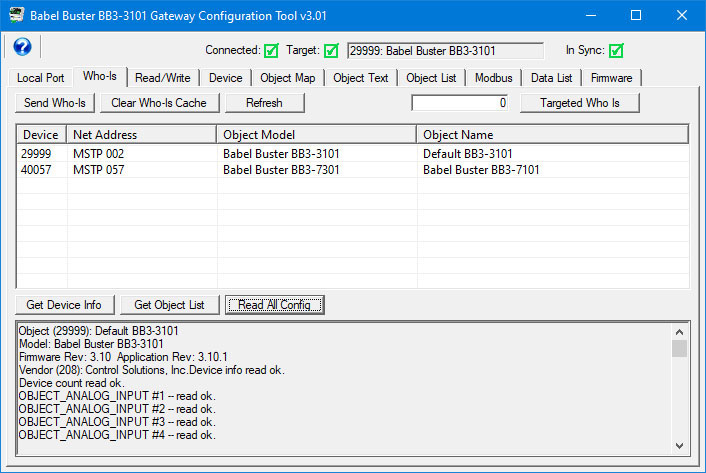
Once the "read all config" process is complete, the In Sync icon in the upper right corner will turn green. The "In Sync" icon that appears in the upper right corner of every page is the global "everything is in sync". If red, it means there is at least one red icon on some page somewhere in the configuration tool. A red icon (red X or red dot) means the configuration displayed on the screen in the configuration tool is not necesarily what is actually in the device. If the icon is green (green check mark or green dot), then the device is in sync with what is displayed.
It is possible on a large network, especially when connected via IP, that there will be so many I-Am replies coming back in response to the Who-Is request that they do not all get through. It has been verified using WireShark that it is not a matter of the tool missing them, it is a matter of the I-Am simply not arriving at all because the network is flooded. The test scenario proving this involved multiple routers, multiple networks, and many devices. You can re-click the Send Who-Is button to try to capture the missing devices, but the same flood of I-Am replies is likely to happen.
In the example illustrated below, our BB3-3101 is at MS/TP MAC address 2. The remaining devices are showing up via an IP to MS/TP router. The BACnet router is on the MS/TP link at MAC address 57.

To see the full network address in cases like this, you need to expand the address column. Here we can see several BACnet IP devices accessible via the BACnet router.
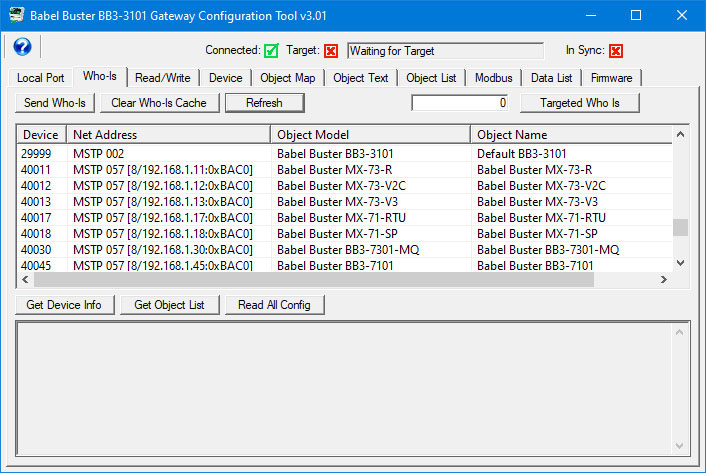
The above example has nothing to do with configuring your BB3-3101. It is simply illustrating what you could see on a busy network.
You can avoid the flood of responses from devices if you know the device instance of the one device you are looking for. In the example below, the BB3-3101 is device instance 29999.
Enter the desired device instance in the window next to the Targeted Who Is button, and click that button. Only that device will now respond with its I-Am reply.

If the Refresh button is clicked at this point, only that one device's object information will be queried. You may now double click this one and only device to select it for configuring.
